Mechanical Characteristics of Sandstone under High Temperature and Cyclic Loading in Underground Coal Gasification
Abstract
:1. Introduction
2. High-Temperature Treatment and Mechanical Properties Test of Sandstone Specimens
2.1. Sampling and Processing of Sandstone Specimens
2.2. High-Temperature Treatment
2.3. Mechanical Properties Test
3. Stress–Strain Curves of Sandstone under Thermal Damage and Cyclic Loading and Unloading Conditions
4. Mechanical Properties of Sandstone under the Action of High Temperature Cyclic Loading and Unloading
4.1. Peak Stress
4.2. Modulus of Elasticity
4.3. Poisson’s Ratio
4.4. Angle of Internal Friction
4.5. Cohesion
5. Analysis of the Destructive Process and Characteristics of the Rock
- (1)
- Initial crack closure stage: the stress–strain curve is a downward concave section, with the increase of the load, the native microfractures inside the rock under the load gradually close. When the stress value reaches a certain value, the strain of the cracked body no longer increases and the fracture can be considered to be completely closed.
- (2)
- Elastic compression stage: The stress–strain curve is a straight line, and the rock basically does not have new cracks generated within this stage, which shows a straight line in the stress–strain curve, and the mineral particles of the rock body become denser with the increase of the load.
- (3)
- Stable crack growth stage: new cracks are continuously generated and expanded inside the rock, and axial cracks mainly start to appear, and the lateral bulging of cracks produces a shear expansion effect.
- (4)
- Crack accelerated growth stage: when the loading stress reaches the compressive strength of the rock, the stress–strain curve begins to exhibit nonlinear characteristics, and the macroscopic performance of the rock specimen shows macroscopic damage.
- (5)
- Post-peak stage: The rock specimen is destabilized after the peak strength, and the corresponding lateral strain increases dramatically, and the test loading ends.
- (1)
- Tension fracture: generally initiated in the middle of the specimen at the earliest, and then gradually extended to both ends under the action of compressive stress. The stress in the middle of the specimen will be concentrated, resulting in tensile stress. The fracture from the middle is gradually extended.
- (2)
- Secondary coplanar fracture: initiated at the tip of the open fracture, after starting the fracture along with the open fracture direction coplanar or nearly coplanar direction stable expansion; after observation of the sandstone specimen after the damage, it can be found that the surface of secondary coplanar fracture shows a rough state.
- (3)
- Secondary inclined fracture: initiated at the end of the open fracture or secondary coplanar fracture, along with the open fracture into a certain angle direction expansion. Through the test, we can find that, around the secondary inclined fracture specimen fragmentation phenomenon, it is most obvious.
- (4)
- Oblique fracture: initiated in a position in the middle of the open fracture, perpendicular to the direction of the open fracture, and may expand in the form of zigzag lines after developing to a certain stage.
6. Conclusions
- (1)
- The peak strain and cohesion of sandstone show an increasing trend with the increase of temperature from room temperature to 800 °C; the peak stress shows a decreasing trend with the increase of temperature from room temperature to 800 °C; the elastic modulus and Poisson’s ratio show an increasing trend from 200 °C to 400 °C and 600 °C to 800 °C, respectively, and a decreasing trend with the increase of temperature in the remaining stages; the internal friction angle increases sharply from room temperature to 200 °C. The internal friction angle increases sharply within room temperature to 200 °C, decreases slowly within 200–600 °C, and decreases sharply when the temperature exceeds 600 °C.
- (2)
- Temperature will cause cracks in the inner layer of sandstone to form microcracks due to anisotropy and mismatch of thermal expansion and water loss, increase porosity, decrease uniaxial compressive strength, decrease modulus of elasticity, decrease Poisson’s ratio, and deteriorate mechanical properties of sandstone; higher temperature will lead to increase sliding resistance between adjacent soil layers, increase shear strength, increase internal friction angle, and increase cohesion.
- (3)
- As the temperature increases, the strength of the rock decreases, the peak stress gradually decreases, the peak strain gradually increases, and the stress–strain curve moves along the positive direction of strain. When the temperature is higher, the strength of the sandstone is less, and the brittleness is greater.
- (4)
- There are four types of cracks that cause rock to break: open fractures, secondary coplanar fractures, secondary inclined fractures, and oblique fractures. The whole process of rock damage phase can be divided into five stages: initial crack closure stage, elastic compression stage, stable crack growth stage, accelerated crack growth stage, and post-peak stage.
Author Contributions
Funding
Data Availability Statement
Acknowledgments
Conflicts of Interest
References
- Ping, Q.; Zhang, C.; Su, H.; Zhang, H. Experimental study on physical and dynamic properties of limestone after different high temperature effects. J. Geotech. 2021, 42, 923–942+953. [Google Scholar]
- Ping, Q.; Wu, M.; Yuan, P.; Su, H.; Zhang, H. Dynamic splitting experimental study on sandstone at actual high temperatures under different loading rates. J. Shock. Vib. 2020, 6, 1–12. [Google Scholar] [CrossRef]
- Ping, Q.; Zhang, C.; Su, H.; Zhang, H. Experimental study on dynamic mechanical properties and energy evolution characteristics of limestone specimens subjected to high temperature. J. Adv. Civ. Eng. 2020, 5, 1–12. [Google Scholar] [CrossRef]
- Liu, S.; Xu, J.Y. Investigation of Impact Compressive Mechanical Properties of Sandstone After as well as under High Temperature. J. High Temp. Mater. Processes 2014, 33, 585–591. [Google Scholar] [CrossRef]
- Shu, R.H.; Yin, T.B.; Li, X.B.; Yin, Z.Q.; Tang, L.Z. Effect of heat treatment on energy dissipation of granite under cyclic impact loading. J. Trans. Nonferrous Met. Soc. China 2019, 29, 385–396. [Google Scholar] [CrossRef]
- He, G.L.; Wu, G.; Huang, X.C.; Zhang, L.; Qiu, Y.P. Experimental study of ultrasonic properties of sandstone before and after high temperature. J. Geotech. Mech. 2007, 28, 779–784. [Google Scholar]
- Gu, C.; Xu, J.; Meng, B.X.; Wen, M.; Lou, C.X. Dynamic mechanical tests and fine view analysis of 2 types of laminated sandstones after high temperature action. J. Coal 2019, 44, 2710–2720. [Google Scholar]
- Xie, H. Progress of research on deep rock mechanics and mining theory. J. Coal 2019, 44, 1283–1305. [Google Scholar]
- Zhu, Z.; Tian, H.; Wang, R.; Jiang, G.; Dou, B.; Mei, G. Study on statistical thermal damage intrinsic model of rocks based on Normal distribution. J. Cent. South Univ. (Nat. Sci. Ed.) 2019, 50, 1411–1418. [Google Scholar]
- Zhang, H.; Wan, Z.; Zhou, C.; Zhao, Y.; Wang, W.; Yang, Y.; Teng, T. Analysis of high temperature mechanical properties and thermal shock effects of dry hot rocks. J. Min. Saf. Eng. 2021, 38, 138–145. [Google Scholar]
- Mambou, L.L.N.; Ndop, J.; Ndjaka, J.M.B. Theoretical investigations of mechanical properties of sandstone rock specimen at high temperatures. J. Min. Sci. 2014, 50, 69–80. [Google Scholar] [CrossRef]
- Deng, L.C.; Li, X.Z.; Wang, Y.C.; Wu, Y.; Huang, Z.; Jiang, C.L. Effect of Temperature on Macroscopic and Microscopic Properties of Sandstone From Qidong Coal Mine. J. Rock Mech. Rock Eng. 2021, 55, 71–90. [Google Scholar] [CrossRef]
- Justo, J.; Castro, J. Mechanical properties of 4 rocks at different temperatures and fracture assessment using the strain energy density criterion. J. Geomech. Energy Environ. 2021, 25, 100212. [Google Scholar] [CrossRef]
- Tian, H.; Mei, G.; Jiang, G.S.; Qin, Y. High-temperature influence on mechanical properties of diorite. J. Rock Mech. Rock Eng. 2017, 50, 1661–1666. [Google Scholar] [CrossRef]
- Tian, H.; Kempka, T.; Yu, S.; Ziegler, M. Mechanical properties of sandstones exposed to high temperature. J. Rock Mech. Rock Eng. 2016, 49, 321–327. [Google Scholar] [CrossRef]
- Zhang, P.; Mishra, B.; Heasley, K.A. Experimental investigation on the influence of high pressure and high temperature on the mechanical properties of deep reservoir rocks. J. Rock Mech. Rock Eng. 2015, 48, 2197–2211. [Google Scholar] [CrossRef]
- Dorcas, S.E. Modelling of fault reactivation mechanisms and associated induced seismicity in rocks with different elastic materials. J. Pet. Res. 2022, 7, 91–105. [Google Scholar]
- Siddig, O.M.; Al-Afnan, S.F.; Elkatatny, S.M.; Abdulraheem, A. Drilling Data-Based Approach to Build a Continuous Static Elastic Moduli Profile Utilizing Artificial Intelligence Techniques. J. Energy Resour. Technol. 2022, 144, 023001. [Google Scholar] [CrossRef]
- Mao, X.B.; Zhang, L.Y.; Li, T.Z.; Liu, H.S. Properties of failure mode and thermal damage for limestone at high temperature. J. Min. Sci. Technol. 2009, 19, 290–294. [Google Scholar] [CrossRef]
- Liu, Z.; Yao, Q.; Kong, B.; Yin, J. Macro-micro mechanical properties of building sandstone under different thermal damage conditions and thermal stability evaluation using acoustic emission technology. J. Constr. Build. Mater. 2020, 246, 118485. [Google Scholar] [CrossRef]
- Zhang, W.; Sun, Q.; Zhu, Y.; Guo, W. Experimental study on response characteristics of micro-macroscopic performance of red sandstone after high-temperature treatment. J. Therm. Anal. Calorim. 2019, 136, 1935–1945. [Google Scholar] [CrossRef]
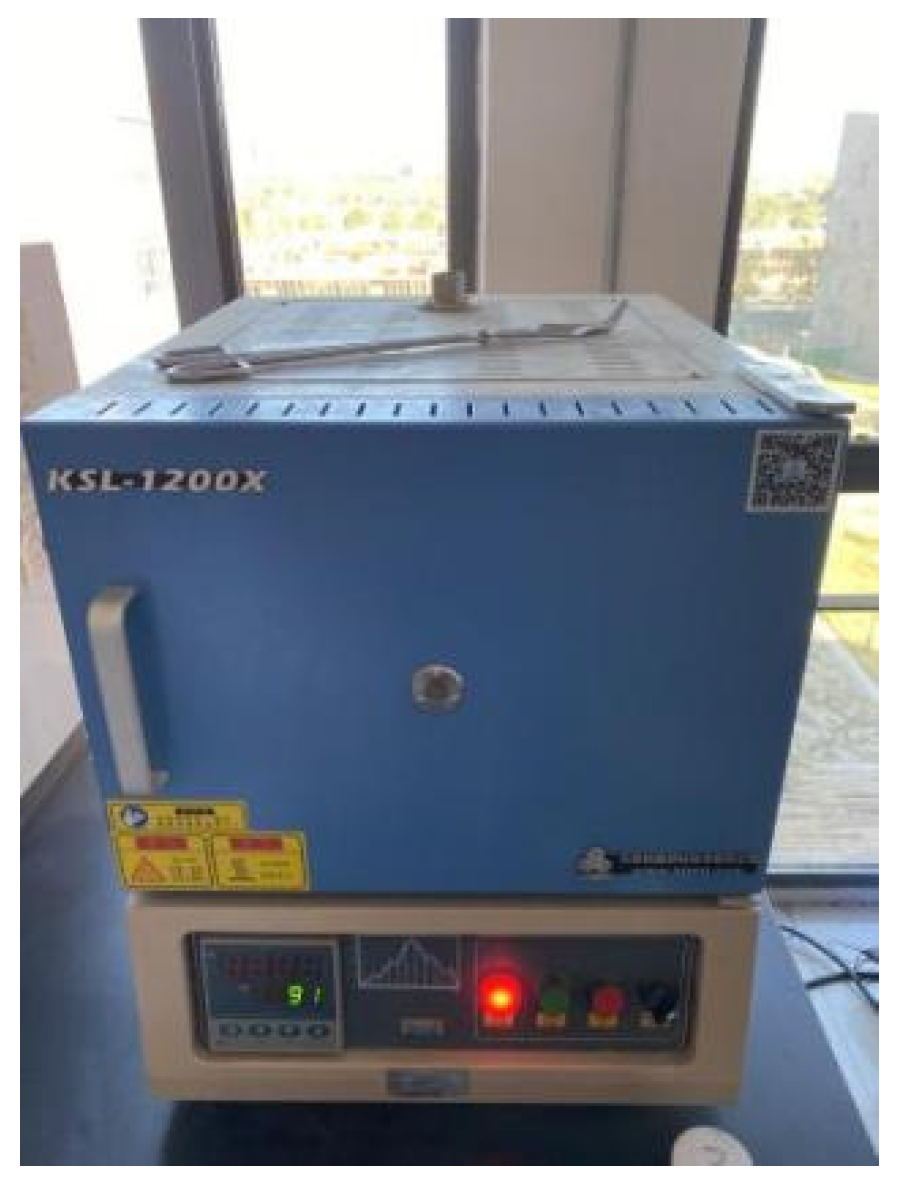


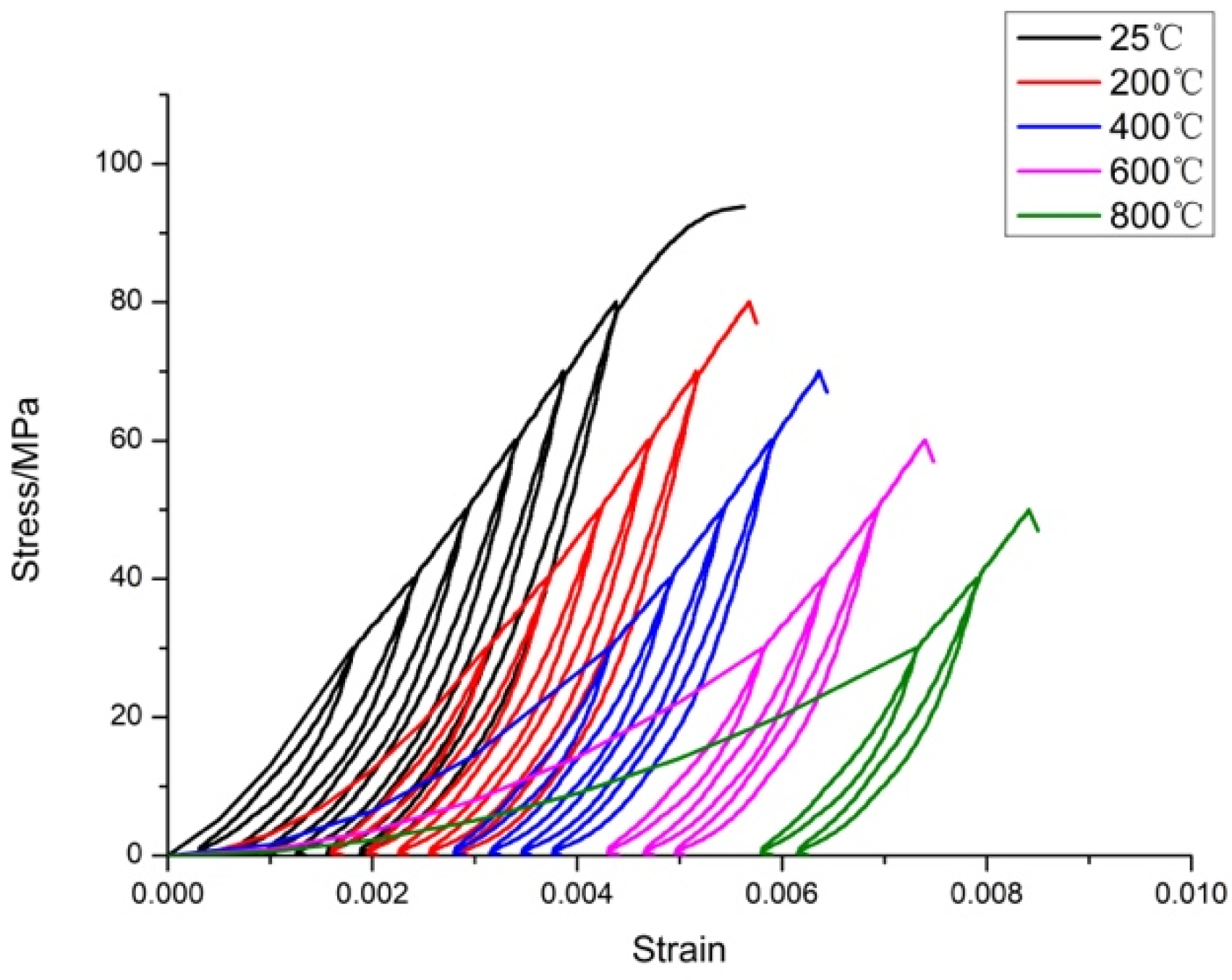
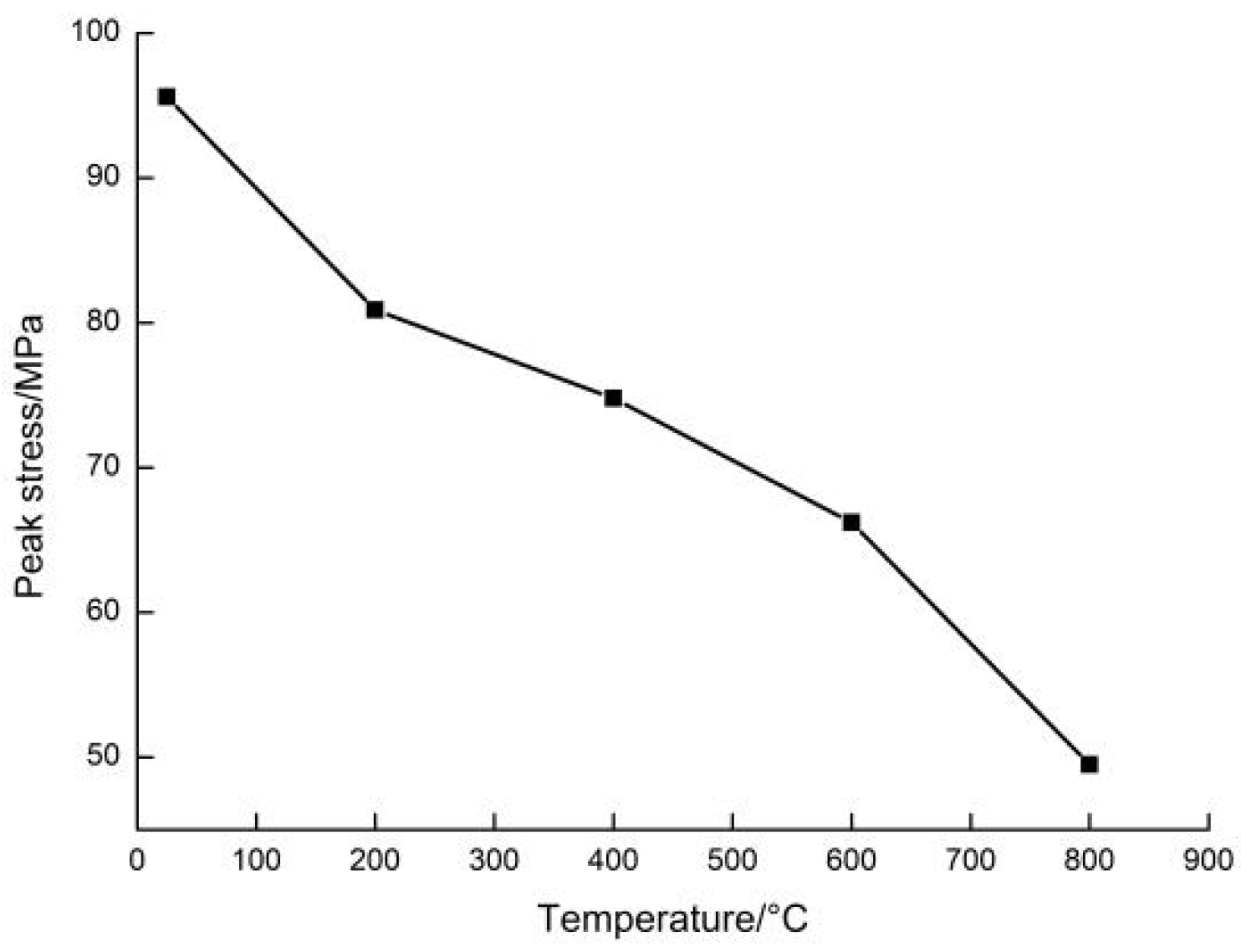


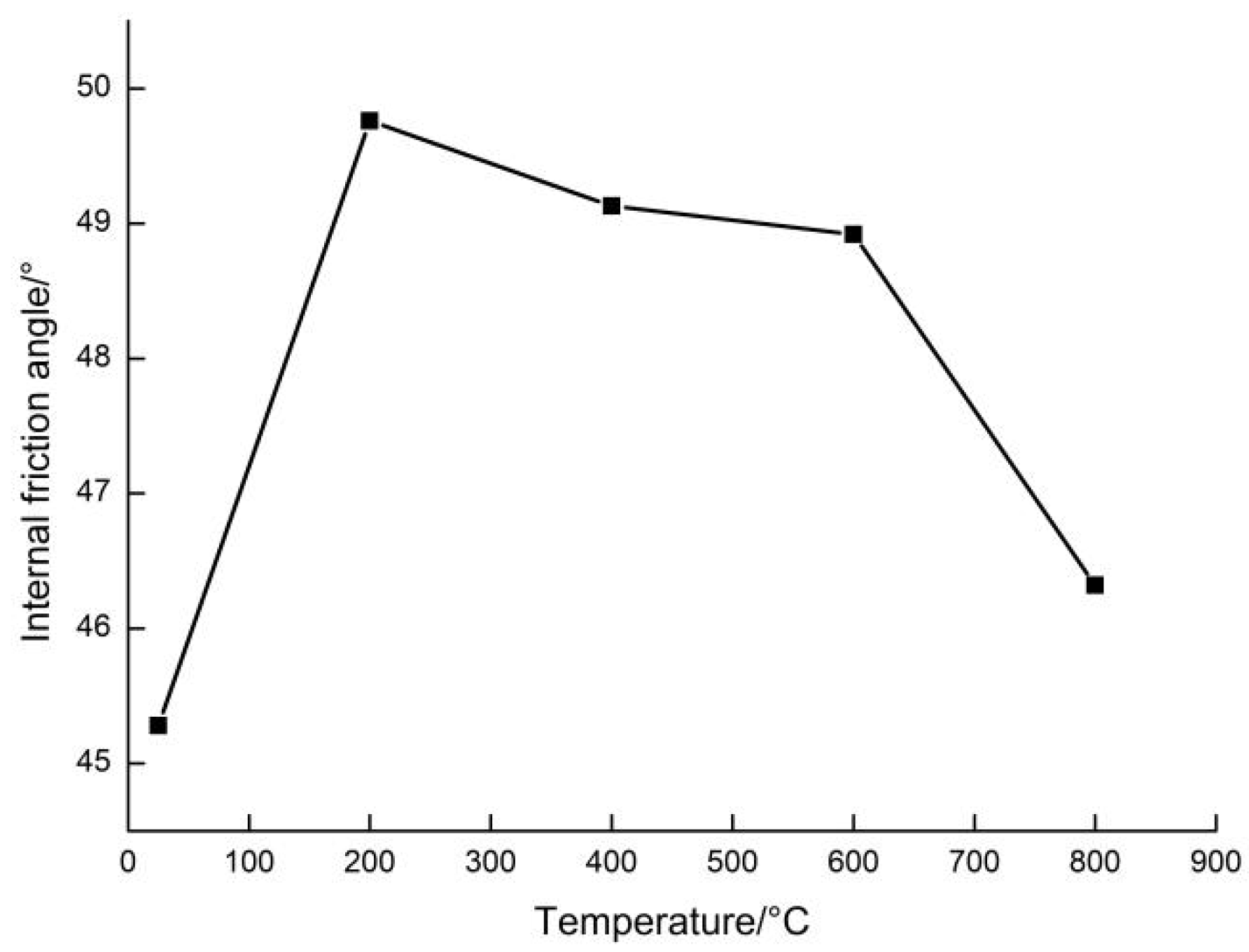
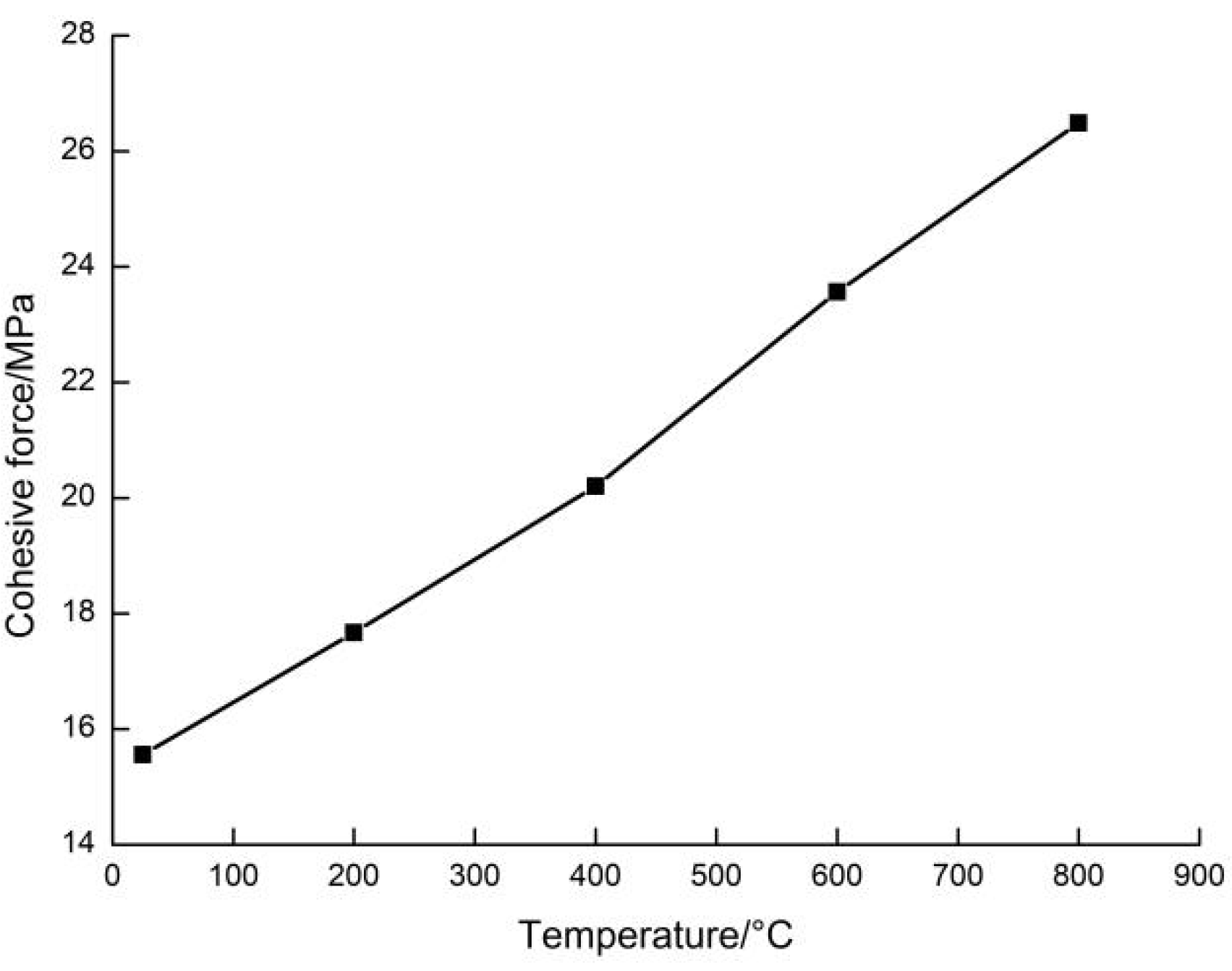

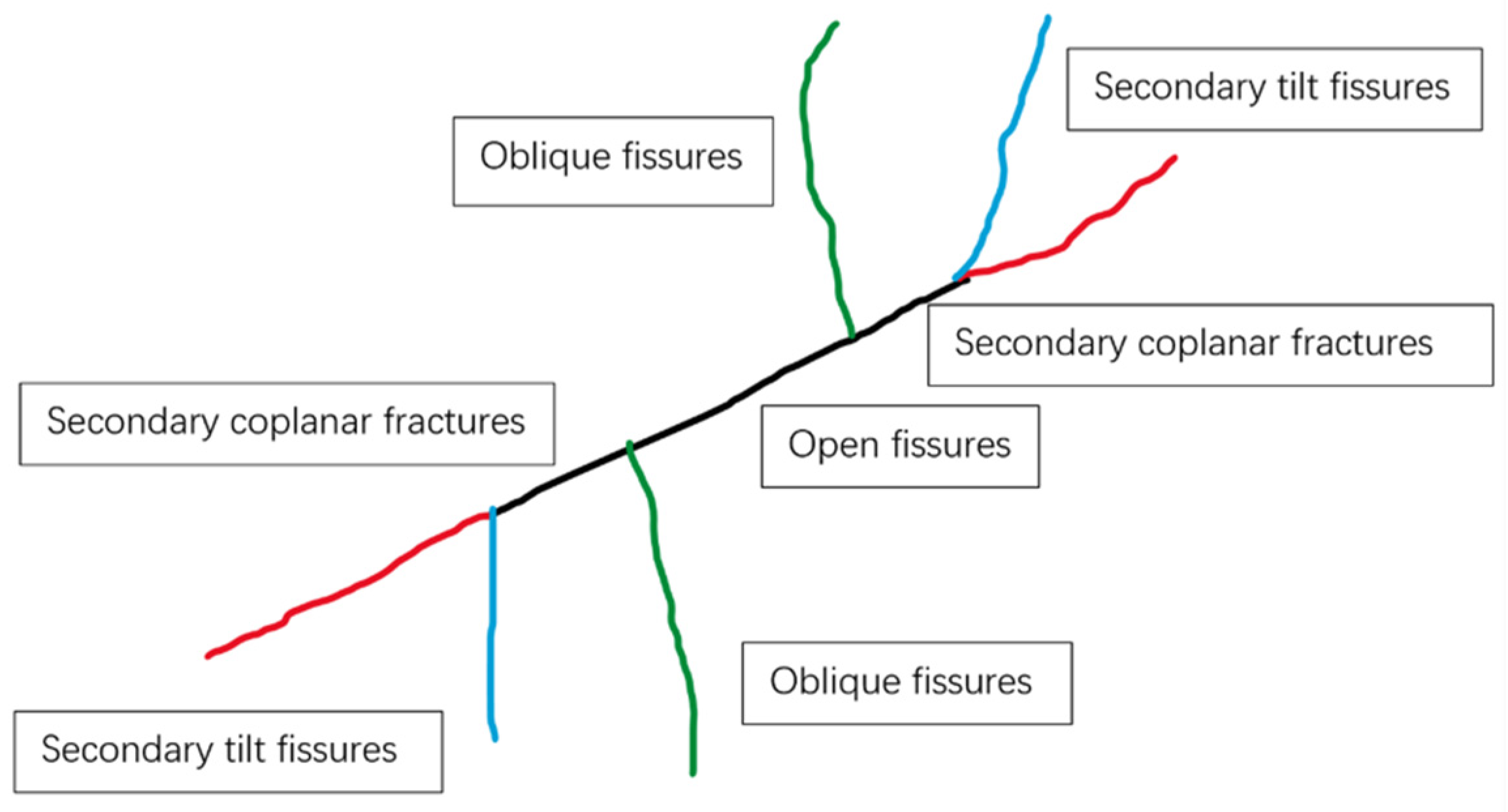
Publisher’s Note: MDPI stays neutral with regard to jurisdictional claims in published maps and institutional affiliations. |
© 2022 by the authors. Licensee MDPI, Basel, Switzerland. This article is an open access article distributed under the terms and conditions of the Creative Commons Attribution (CC BY) license (https://creativecommons.org/licenses/by/4.0/).
Share and Cite
Luo, J.; He, J. Mechanical Characteristics of Sandstone under High Temperature and Cyclic Loading in Underground Coal Gasification. Minerals 2022, 12, 1313. https://doi.org/10.3390/min12101313
Luo J, He J. Mechanical Characteristics of Sandstone under High Temperature and Cyclic Loading in Underground Coal Gasification. Minerals. 2022; 12(10):1313. https://doi.org/10.3390/min12101313
Chicago/Turabian StyleLuo, Ji’an, and Jun He. 2022. "Mechanical Characteristics of Sandstone under High Temperature and Cyclic Loading in Underground Coal Gasification" Minerals 12, no. 10: 1313. https://doi.org/10.3390/min12101313
APA StyleLuo, J., & He, J. (2022). Mechanical Characteristics of Sandstone under High Temperature and Cyclic Loading in Underground Coal Gasification. Minerals, 12(10), 1313. https://doi.org/10.3390/min12101313







